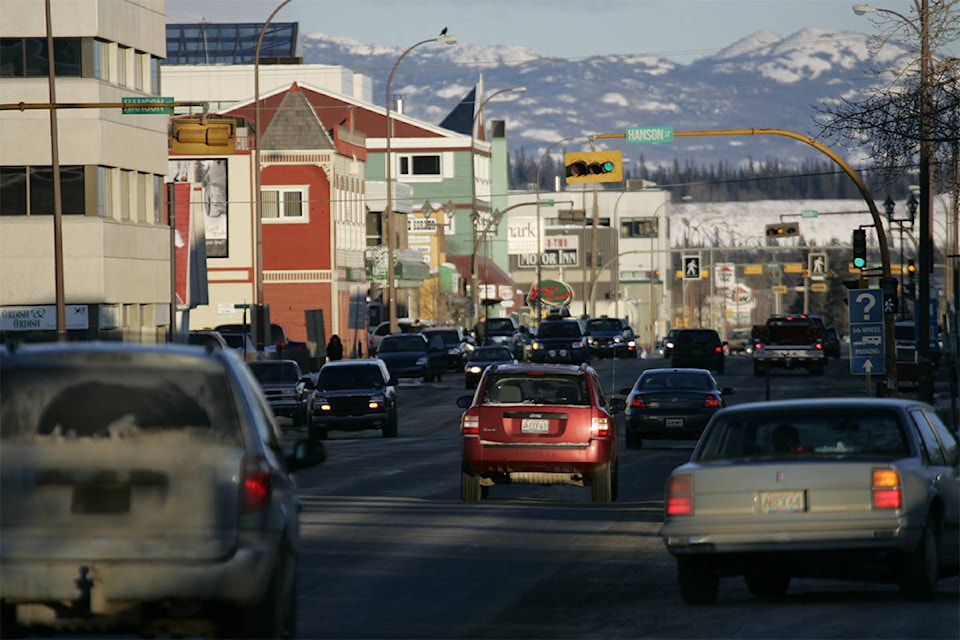Changing the Motor Vehicle Act would be “biblical,” but it’s something Whitehorse mayor Dan Curtis intended to bring up at the Association of Yukon Communities annual general meeting this week.
“It’s a monster,” he says of potentially changing the act. “It’s a big beast.”
However, he said he believes there’s widespread interest in trying. That’s why the city submitted a resolution to the Association of Yukon Communities, asking for help with both the Motor Vehicle Act and the Summary Convictions Act, in the hopes of making changes, including potentially imposing stiffer fines for speeding.
Curtis was speaking to the News after council received a letter last week from Geraldine Van Bibber, MLA for Porter Creek North.
In her letter, Van Bibber said she has received several calls and visits from residents of Porter Creek who are concerned about speeding on 12th Avenue.
“The concern about speeding has been front and centre for many years and it has been escalating,” reads the letter. “It is only a matter of time before there is another accident on this roadway.”
She called on council to help come up with solutions to a problem she said has persisted for decades, and only shows signs of getting worse as Porter Creek develops further.
Speaking from Dawson City the day the AGM was scheduled to begin, Van Bibber said younger and younger families are moving into the neighbourhood. They are particularly worried about the speeds being driven around Jack Hulland Elementary School, particularly now that the roads are dry.
“With summer and non-icy roads, people just seem to pick up speed on that little straight stretch,” she said, adding she’s not even asking for the speed limit (which is 50) to be lowered, just that drivers adhere to it.
“There’s nowhere to go in a hurry in Whitehorse for goodness’ sake … take the extra five minutes if you’re in a rush and drive earlier.”
Curtis said he’s aware of concerns about 12th Avenue and other streets throughout the city (“Traffic is by far the biggest complaint,” he said), but when it comes to speeding, that’s the jurisdiction of the RCMP and territorial legislation. It’s not as simple as city council amending a bylaw.
One thing the city is doing, he said, is working with the Yukon government to put together a school traffic master plan.
A committee is currently speaking to schools across Whitehorse to find out more about the traffic issues faced by individual schools. That report should be completed at the end of May.
In the meantime, Curtis said the city is introducing traffic calming kits, which include removable speed bumps, temporary curbs, posts that narrow paths for cars, and radar speed signs.
The city has also just started its annual collection of traffic data, said Taylor Eshpeter, assistant city engineer with the City of Whitehorse.
Eshpeter said this includes using a variety of manual and camera counts to identify patterns and problems with speed and traffic flow.
Manual counts take place at various signalized intersections (roughly 25) at three different times a day — from 7 a.m. to 9 a.m., 11 a.m. to 1 p.m., and from 4 p.m. to 6 p.m.
For the most part, he said this takes place from May 1 until just before school is out.
This year, Eshpeter said the city is also looking closely at “pedestrian clearance” — the amount of time between when a pedestrian signal starts flashing to indicate a light change, and the time it becomes solid.
Eshpeter said it has historically been based on a walking speed of 1.5 metres per second, but said more recent guidelines recommend a lower average speed.
As part of the review, the city is checking measurements and re-calculating pedestrian clearance at 1 or 1.2 metres per second to see how that affects light sequencing.
In addition to the annual counts, Eshpeter said other issues are looked at on a case-by-case basis as information is gathered through observation of staff, and by way of public feedback.
Last year, the second largest feedback area was the intersection of Robert Service Way and the Alaska Highway.
As a result, he said it was included in the capital budget to install a dedicated left turn lane at the intersection (similarly, a dedicated turn lane was included at the top of Two Mile Hill heading downtown).
Right now, he said the city receives more feedback on 12th Avenue than any other street.
“We are collecting more data this year to inform some potential solutions,” he said.
Van Bibber said suggestions have been made in the past — for speed bumps and crosswalks and roundabouts, but the only thing she has noticed is a high-collision sign at 12th Avenue and Pine Street. Curtis said speed bumps were installed on 12th Avenue at one point, but they were removed when the sound of them being driven over was waking people up in the middle of the night.
She also said she’d like to see roundabouts, or maybe planter boxes in the middle of the street, like the ones you find in Crestview.
She said she’s interested to see what comes of the city’s submission at the AGM.
So is Curtis.
“These are sea changes for us,” he said. “But the worst thing we can do is nothing.”
Contact Amy Kenny at amy.kenny@yukon-news.com
